In a year when most tech stuff got expensive, Xiaomi has surprised customers with yet another affordable 5G smartphone. Its latest Redmi 13C 5G costs only Rs 10,999 (starting price, 4GB + 128GB), and it has even managed to beat my Rs 79,900-worth Apple iPhone 14 Plus (review) in a 5G speed test in select locations. It is also among the rarest Android phones in the segment to offer up to 256GB of inbuilt storage, which believe me, can be a blessing in the long run.
But apart from 5G support and higher storage capacity, the Redmi 13C 5G is mostly a no-frills device. It has a 50MP primary camera, which is only good in numbers. Its tall 6.74-inch display only offers HD+ (1,600 x 720 pixels) resolution and includes an antiquated waterdrop-style notch. Plus, there’s support for 18W charging, though the box only includes a 10W charger.
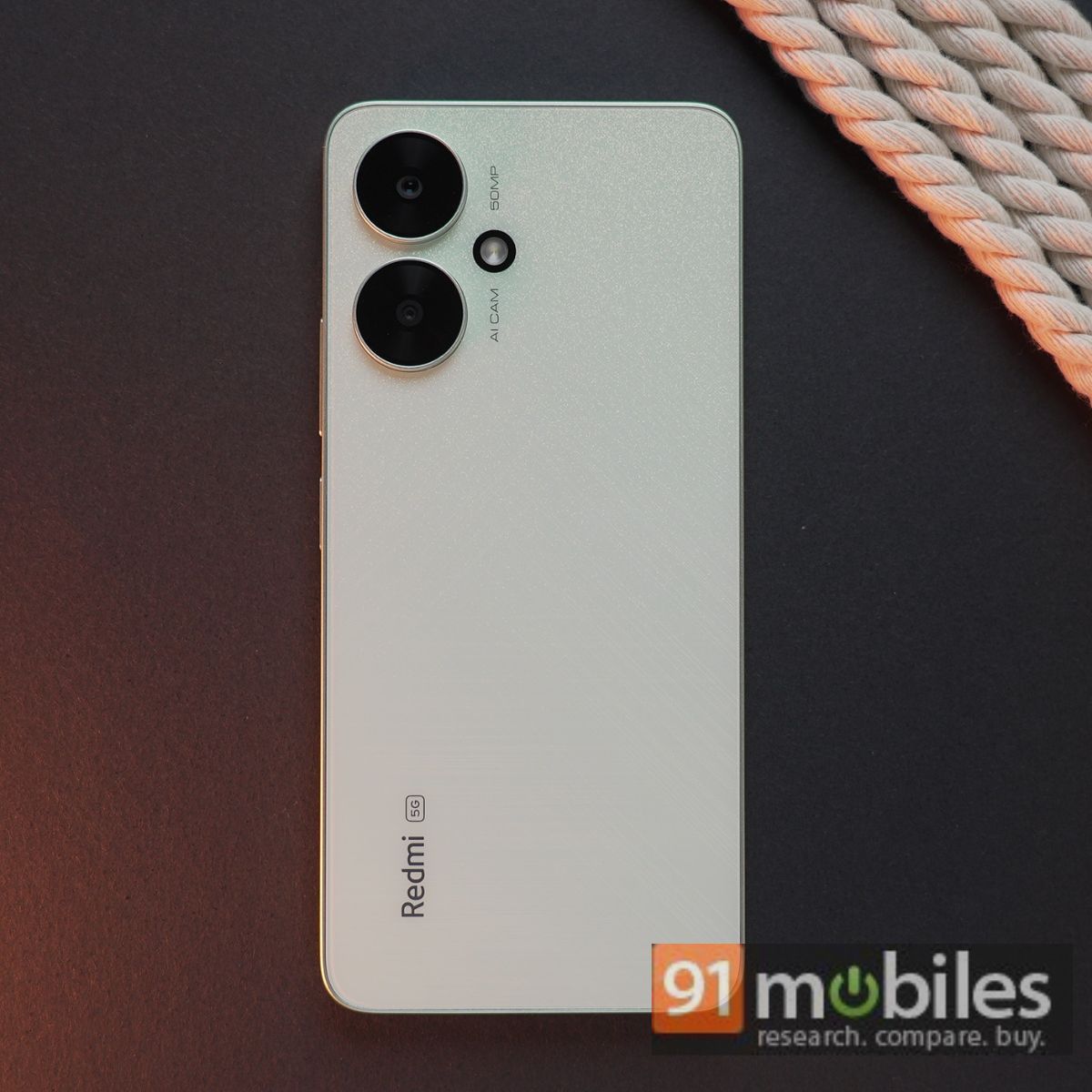
In that case, is the Redmi 13C 5G even worth considering if you don’t care so much about super-fast internet speed? Here’s my review after using the Redmi 13C 5G for a few days.
Verdict
Xiaomi’s Redmi 13C 5G deserves credit for helping take 5G to the masses. It is also a decent option for those who prioritise battery and performance. That being said, you may want to manage your expectations, particularly regarding cameras and the OS experience. Notably, the Redmi 13C 5G’s biggest competitor is its own sibling, the Redmi 12 5G (review), which includes a more capable processor for a marginal price difference.
Design and display
The Redmi 13C 5G resembles the Redmi 12 5G with a flat-edge design and large cutouts on the back for the rear cameras. The front looks different due to a waterdrop-style notch and thick bezels, which should be a thing of the past as we enter 2024. Thankfully, its plastic frame feels solid, and the back offers a nice glass-like finish.
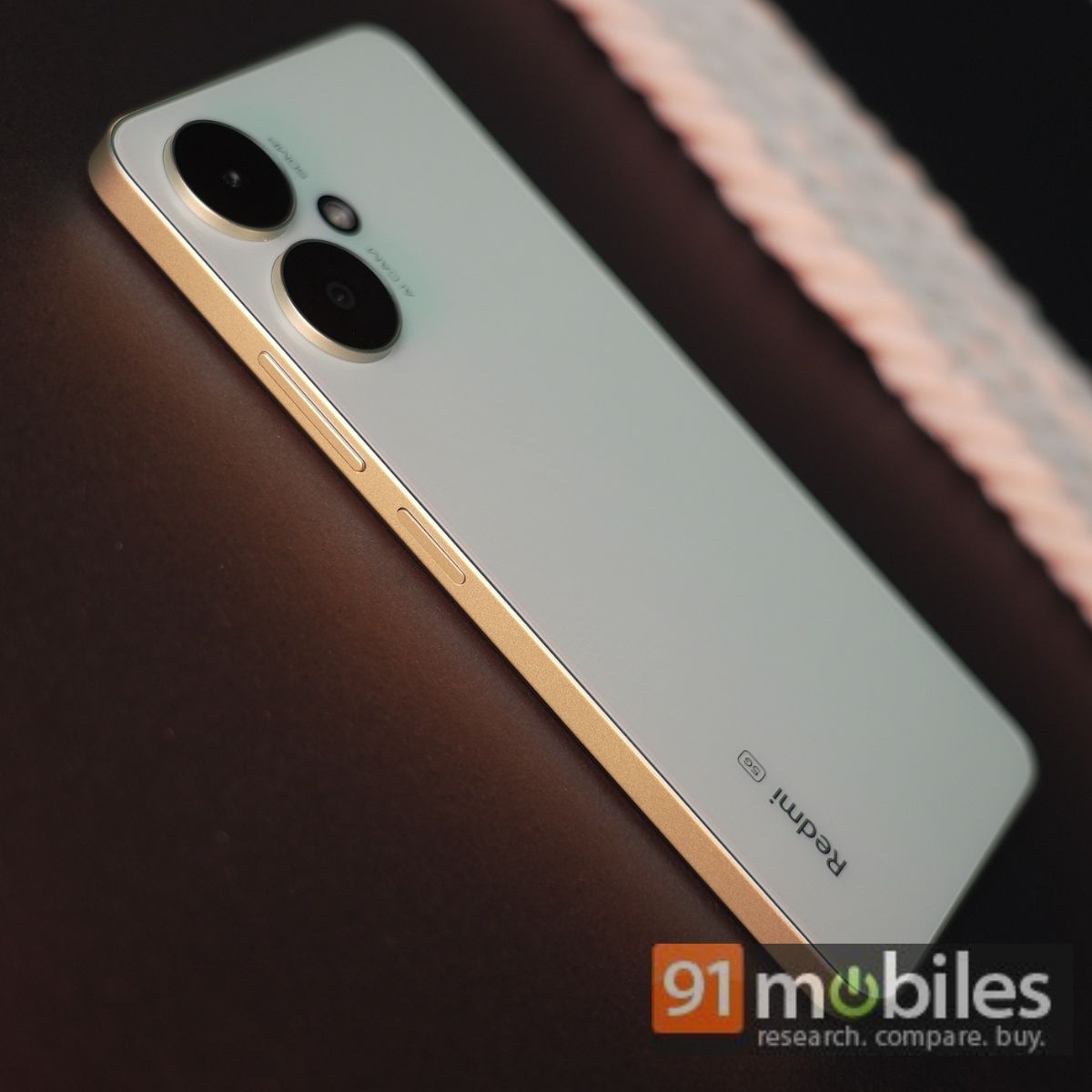
For this review, I received the Startail Green variant. The Redmi 13C 5G also comes in Startail Black and Silver colour options.
I am not the biggest fan of the shimmery accents on the back and prefer a minimalist look. However, after cross-checking the design with some colleagues and family members, their reactions were mostly mixed. Therefore, I am guessing some of you may prefer a flamboyant design. But everyone agrees with the sheer size of the Redmi 13C 5G. With its massive 6.74-inch display, it towers over the iPhone 15 Pro Max and Samsung Galaxy S23 Ultra. Maintenance can be a challenge, as the box excludes a protective case.
There’s no Infrared transmitter either, which used to be one of the most cherished features in Redmi smartphones. Other standard ports and buttons, including a 3.5mm headphone jack, remain constant on the Redmi 13C 5G. There’s a physical fingerprint scanner embedded on the side power button. The scanner’s performance can be hit-and-miss. It was mostly a miss in my review.
Once the Redmi 13C 5G is unlocked, viewing content on the tall screen is a different experience, in a good way. For reading WhatsApp messages or news and browsing social media, the 6.74-inch display can be blissful. Video playback experience may differ depending on the type of user.
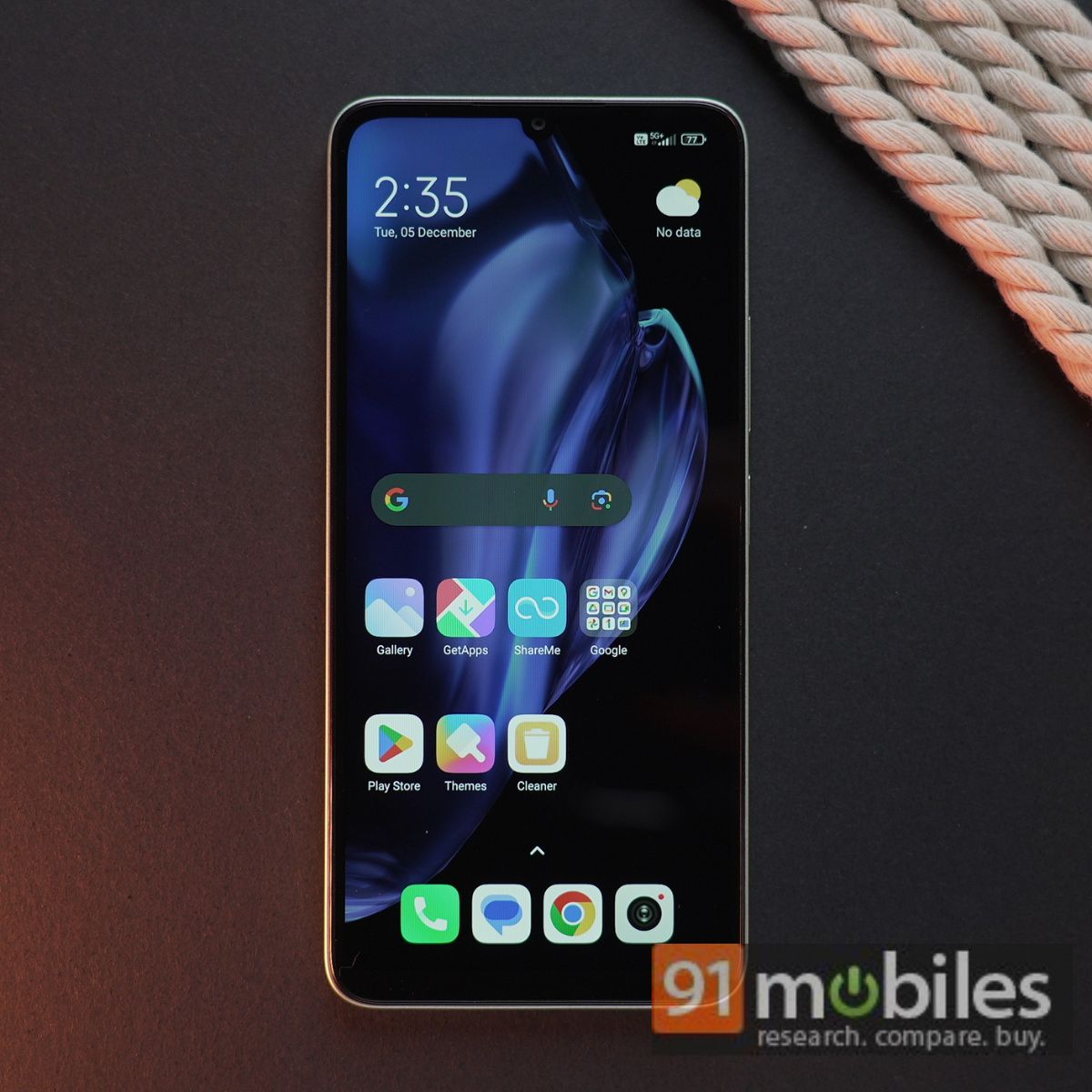
For entry-level smartphone users, the Redmi 13C 5G’s HD+ display with a 90Hz refresh rate might be sufficient. However, for those upgrading from older devices – and I anticipate a considerable number falling into this category – Xiaomi could have taken a full HD display into account.
I tested the LCD display by watching videos and shows on YouTube and Netflix, respectively. Videos on YouTube looked crisp in high resolution, but Netflix playback requires optimisation. Naturally, the shadows and black spots aren’t as deep as you’d get in an AMOLED panel. The overall viewing experience is also average, as the Redmi 13C 5G does not offer stereo speakers.
Cameras
The camera system takes a hit as Xiaomi’s priority with the Redmi 13C 5G remains with performance and fast internet speeds. The rear camera system lacks an ultra-wide camera, which is becoming a norm among smartphones in this range. The rear panel includes a 50MP primary camera and a 2MP depth sensor. The front has a 5MP AI selfie camera.

By default, the Redmi 13C 5G prioritises high saturation, making most pictures and videos appear with a warm orangish hue. Most images also lack sharpness and contain a considerable amount of noise. I did find a hack to make images appear sharper by enabling night mode under bright conditions, but stability would be an issue. At night, the camera performance dwindles even further as colours get substantially toned down with more noise in the image. The selfie camera also struggles to detect skin tone – be it well-lit or dim lighting conditions.
I compared its results with shots taken by an iPhone 14 Plus to gain a deeper understanding of the camera performance. It turns out the Redmi 13C 5G by default, offers a tight focal length, resulting closer focus on the subject and less background being captured.
Performance and software
The Redmi 13C 5G draws power from the MediaTek Dimensity 6100+ SoC. The base variant includes 128GB storage and 4GB RAM, while the top variant, which I am reviewing, offers 256GB of storage and 8GB RAM (Rs 14,499). Xiaomi is employing USF 2.1 storage technology, which aligns with the maximum supported storage type by the MediaTek Dimensity 6100+ SoC.
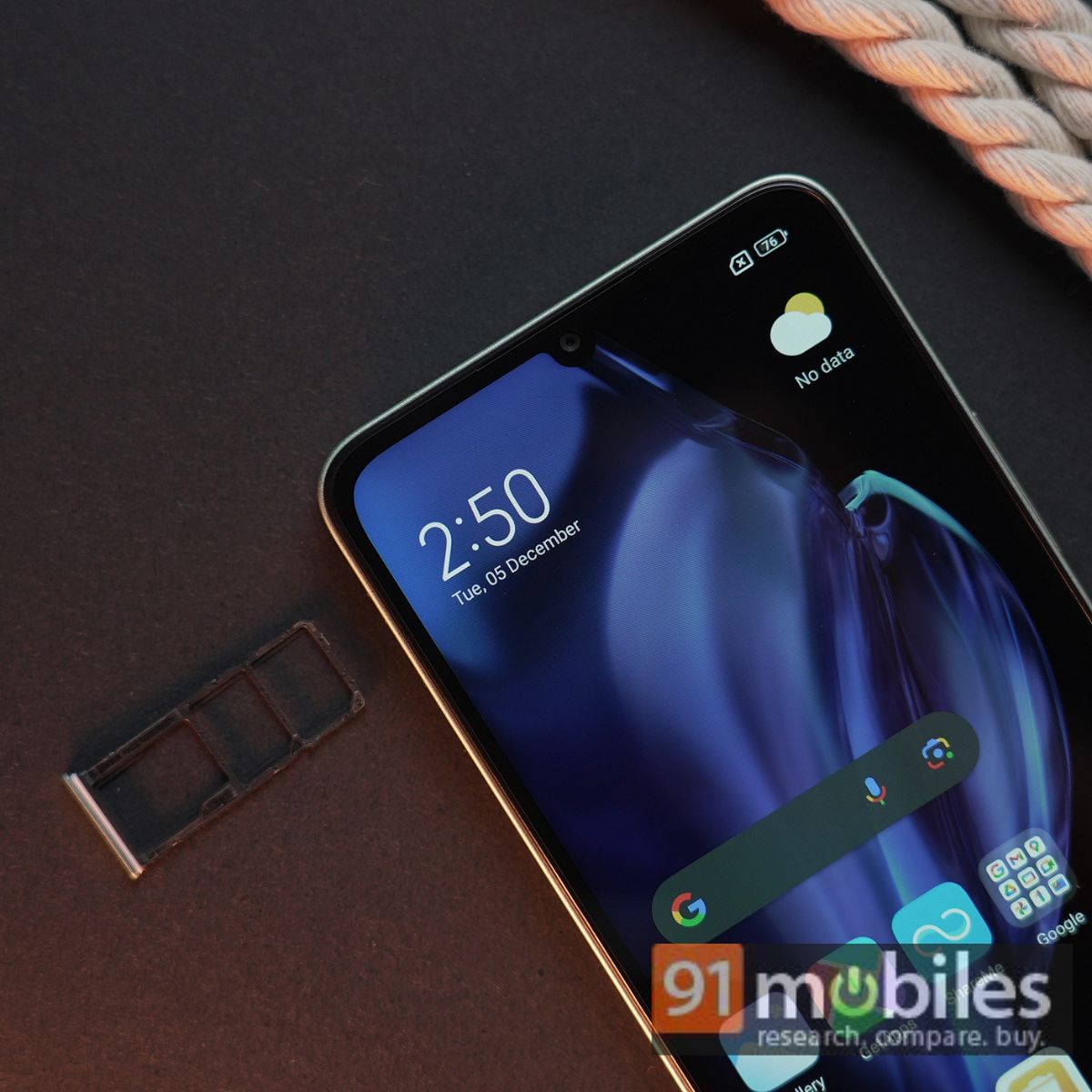
The Dimensity 6100+ is also a fairly stable chipset as you will notice in the screenshot below. In Geekbench 6’s single-core and multi-core tests, the Redmi 13C 5G (top variant with 256GB storage and 8GB RAM) scored 698 and 1903 points, respectively. This beats scores attained by the MediaTek G85-powered Redmi 12C. Its AnTuTu scores are also decent, though the Realme 11X 5G with the same chipset performs better in the same benchmarks.
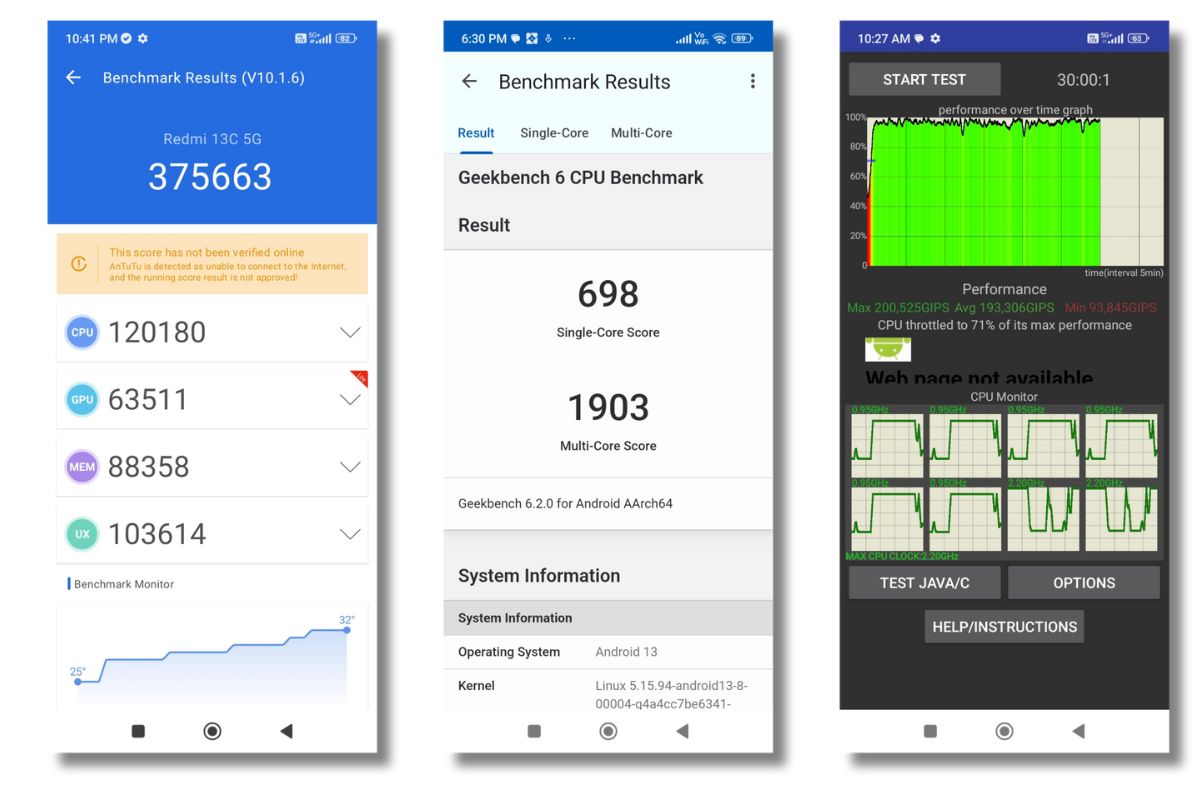
The Redmi 13C 5G’s big focus is taking 5G connectivity to the masses. I tested 5G speeds with an Airtel 5G Plus connection, and the performance was fantastic. In most areas (home and office) I was getting at least 200Mbps speeds, which is still better than my home Wi-Fi. Do note speeds will differ based on the coverage. In a few cases, the Redmi 13C 5G could beat an iPhone 14 Plus with a Jio 5G SIM.

Overall, the MediaTek Dimensity 6100+ SoC offers modest processing power. There are noticeable stutters and lags, especially while switching apps and running Google Assistant. But that won’t substantially hamper your daily work. The Redmi 13C runs on Android 13-based MIUI 14, and it may take a while to receive the Android 14 update. As expected, loads of pre-installed apps on the smartphone make the software experience a bit cluttered.
Battery and charging speeds
Similar to the Redmi 12 5G, the Redmi 13C 5G packs a 5,000mAh battery with up to 18W charging support. Be it a battery stress test with the PCMark app or real-life usage, the battery backup per charge is superb. Even with a 5G SIM, a high refresh rate enabled, and 80 percent brightness, the Redmi 13C 5G easily lasts a full day.
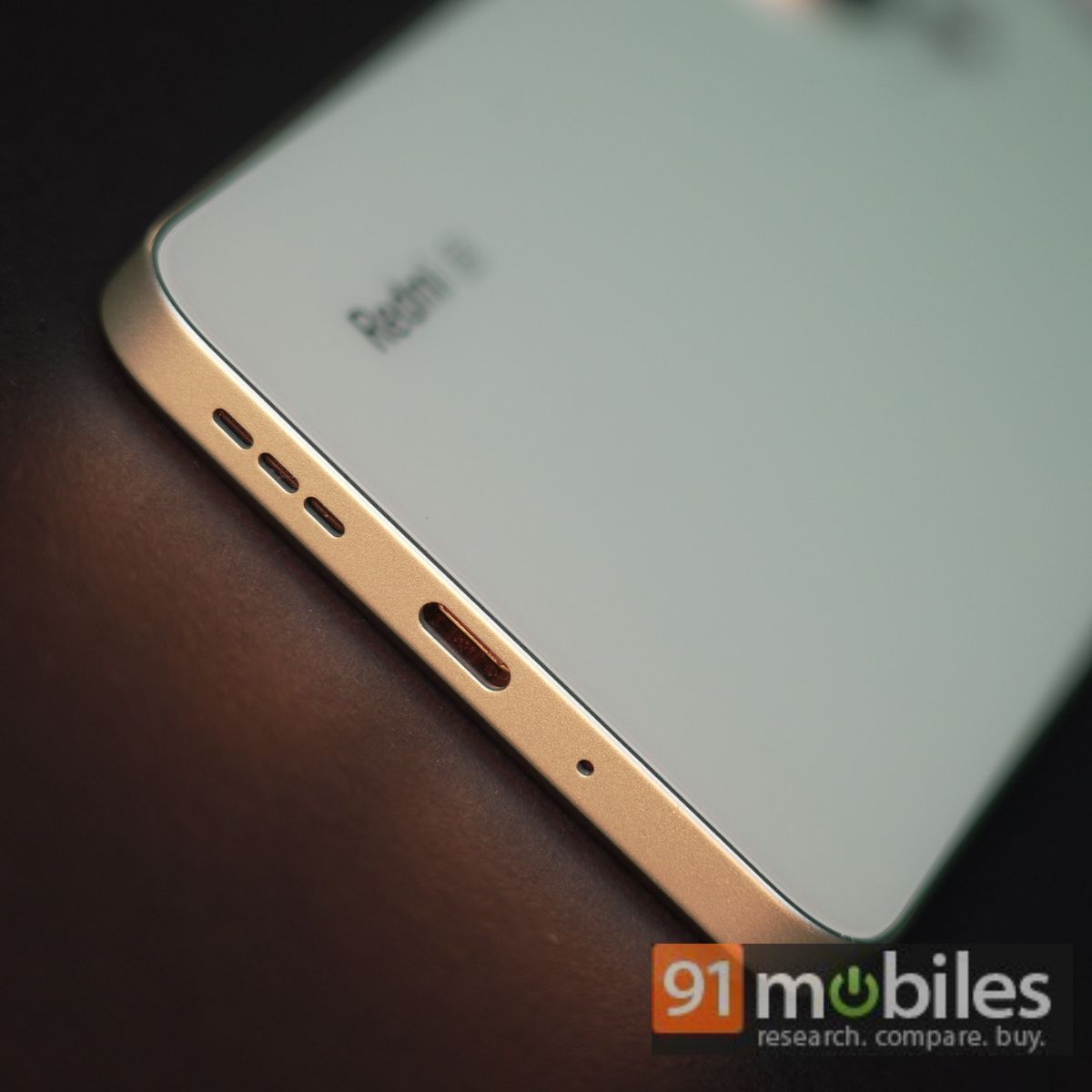
With the 10W bundled charger, the Redmi 13C 5G attains approximately 20 percent charge in 30 minutes. A full charge takes over two hours with the bundled charger.
Final verdict
The Redmi 13C 5G sits somewhere between an entry-level and a capable sub-Rs 15,000 smartphone. There are some compromises to keep the pricing affordable, which in my opinion, isn’t a bad thing as many young customers do want a taste of the 5G internet speeds as long as Indian telcos aren’t separating 5G and 4G prepaid or postpaid plans, at least for now.
If I keep the sub-standard camera performance and slow charging speed aside, the Redmi 13C 5G will easily get the basics done, which include calling, texting, and running essential apps (WhatsApp, Uber, and so on) with reliable internet speeds. Therefore, on paper, the Redmi 13C 5G is a great idea, but the execution by Xiaomi could’ve been better.
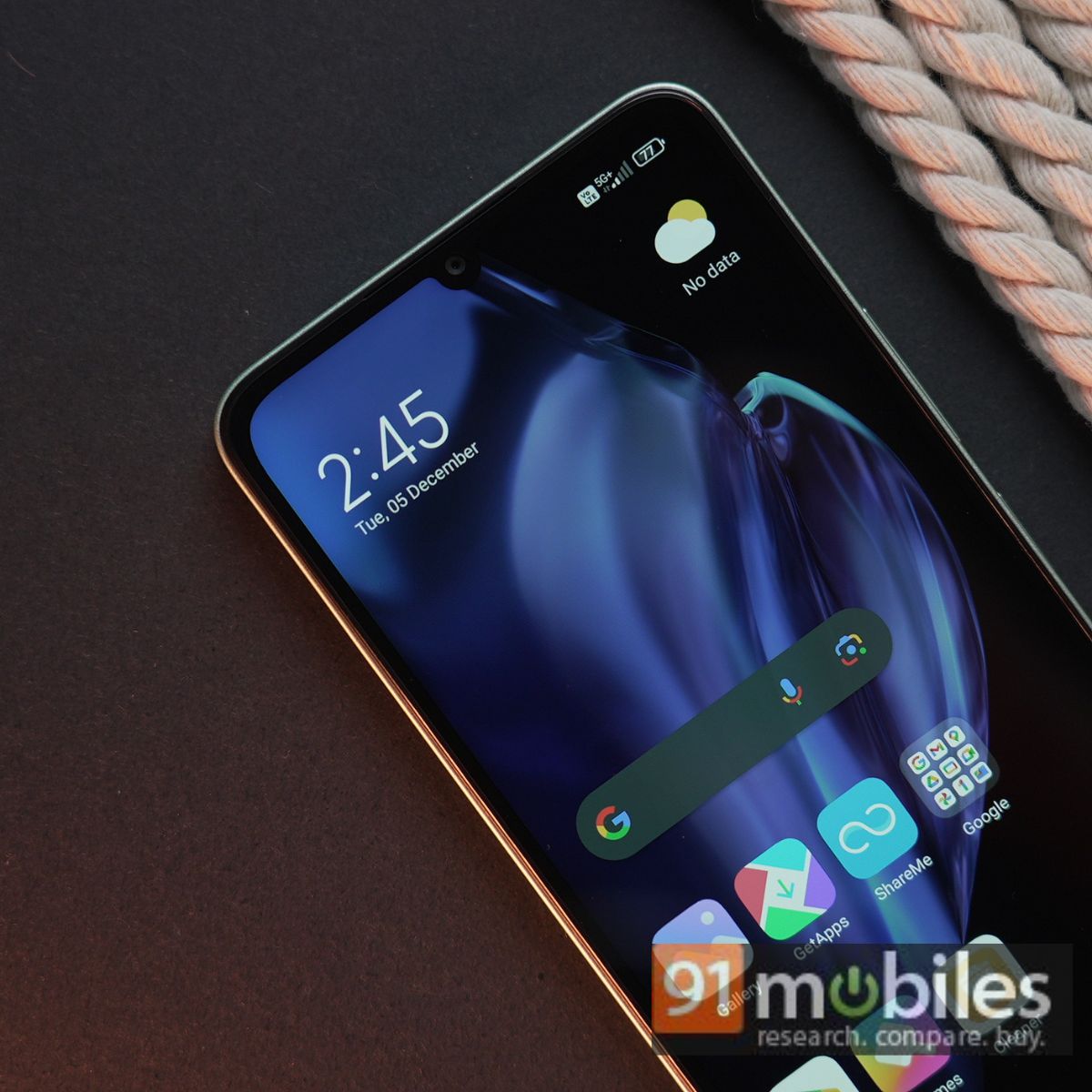
Whether to go for Redmi 13C 5G or not, the answer isn’t straightforward. You could spare some extra bucks and go for the Redmi 12 5G (roughly Rs 1,000 for almost all three variants), which offers much better performance and a 22.5W charging brick in the box. The Realme 11X 5G is also a decent option, though it might be pricier. If you’re restricted on the budget though, the Redmi 13C won’t disappoint.
Editor’s rating: 7.5 / 10
Reasons to buy
- Solid build quality and the rear panel has a glass-like smooth finish.
- 5G speed on a budget. The Redmi 13C 5G even fetched 790Mbps.
- Long battery backup per charge.
Reasons not to buy
- Camera performance is average, especially in low-light conditions.
- The box includes a 10W charger, and the charging time can take up to two hours.
- The Redmi 13C includes several pre-installed apps.
 Xiaomi Redmi 13C 5G Xiaomi Redmi 13C 5G |
vs |  Xiaomi Redmi 12 5G Xiaomi Redmi 12 5G |
 Xiaomi Redmi 13C 5G Xiaomi Redmi 13C 5G |
vs |  realme 11x 5G realme 11x 5G |
The post Redmi 13C 5G review: good idea, decent execution first appeared on 91mobiles.com.
0 Comments